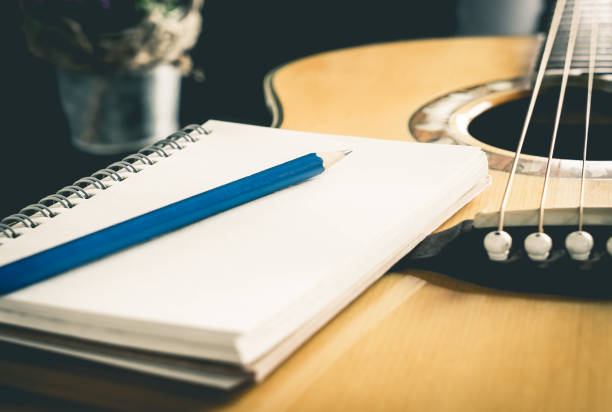Songwriting Template: What’s Your Angle?
If you’re having trouble getting started on a song, it can help to have a template to work from. In this article, we’ll show you how to use the “What’s Your Angle?” template to get your creative juices flowing and write a great song!
How to Use the Songwriting Template
If you’re not sure how to start writing a song, or what angle to approach it from, try using a songwriting template. This can help you figure out what to write about, and give your song a focus. Not sure where to find a template? We’ve got you covered – just keep reading!
Once you have a template, try filling it out with your own ideas. Don’t worry about making it perfect – just let the creativity flow. After all, that’s what songwriting is all about! And who knows, maybe your song will be the next big hit.
The Benefits of Using the Songwriting Template
If you’re a songwriter, then you know how important it is to have a good songwriting template. A good template can make the difference between a hit song and a flop. But what are the benefits of using a songwriting template?
First, a songwriting template can help you organize your thoughts and ideas. It can be difficult to write a song without any structure, but a template can provide that structure for you. This can help you stay on track and prevent you from getting lost in your own thoughts.
Second, a songwriting template can help you save time. If you’re not using a template, then you might spend hours or even days working on a song without making much progress. But with a template, you can quickly get an idea of what needs to be done and how to do it. This can save you a lot of time in the long run.
Third, a songwriting template can help you get feedback from others. If you’re not sure about something, you can always ask someone else for their opinion. This can be especially helpful if you’re working with a co-writer or producer.
Fourth, a songwriting template can help you stay creative. It
How to Write a Hook
You’ve written a great song, but now you need a hook to make it really stand out. A hook is the key element that will make your song memorable and get it stuck in people’s heads. If you can write a catchy hook, you’re well on your way to writing a great song.
There are a few things to keep in mind when you’re writing a hook. First, make sure it’s catchy and easy to remember. It should be short and to the point – you don’t want to lose people’s attention with a long, drawn-out hook. And finally, it should be relevant to the rest of your song. A good hook will reinforce the message or theme of your song and make it more impactful.
If you’re having trouble coming up with a hook, start by brainstorming some key phrases or ideas that capture the essence of your song. Once you have a few potential hooks, try singing them to see which one sounds the best. And don’t be afraid to experiment – sometimes the best hooks are ones that surprise you.
Keep these tips in mind and you’ll
How to Write a Verse
If you’re having trouble getting started on your verse, ask yourself what your song is about. Is it a love song? A breakup song? A party song? Once you know what angle you’re coming from, it’ll be easier to start writing.
If you’re still stuck, try thinking of a specific event or story that you can relate to your song. This can help give you some direction and make the writing process a little easier. Use that event or story as a jumping off point for your verse and see where it takes you!
How to Write a Chorus
You may have the best verse in the world, but if your chorus isn’t catchy, no one will remember your song. That’s why it’s important to put some thought into writing a chorus that packs a punch.
Here are a few tips to get you started:
1. Keep it simple
The best choruses are usually pretty simplistic. This allows people to easily sing along and remember the words. So when you’re writing your chorus, don’t try to cram too much into it. Keep the lyrics straightforward and to the point.
2. Make it memorable
If you want people to remember your chorus, you need to make it memorable. One way to do this is by using strong imagery or metaphor. Another way is to create a catchy melody that will stick in people’s heads.
3. Keep it short
A chorus doesn’t need to be long – in fact, shorter choruses are often more effective. So don’t feel like you have to write a novel worth of lyrics for your chorus. A few well-chosen words can be just as powerful.
4. Repeat it
How to Write a Bridge
If you’re stuck on how to write a bridge for your song, don’t worry – you’re not alone. Many songwriters find it difficult to write a good bridge, but with a little creativity and effort, it’s definitely possible. Here are a few tips to help you write a great bridge for your song:
1. First, ask yourself what the purpose of the bridge is. Is it to provide contrast from the verse or chorus? Is it to build tension or create anticipation? Once you know the purpose of the bridge, you’ll be able to better focus your writing.
2. Try using different lyrics or melodies in the bridge than what you used in the verse or chorus. This can help create contrast and make the bridge stand out more.
3. Make sure the bridge ties in with the rest of the song. It should make sense musically and lyrically, and it should help move the story forward.
4. Keep it simple. A good bridge doesn’t need to be long or complicated – sometimes just a few well-chosen words can be enough.
5. Be creative! There are no rules when it comes to writing a bridge, so let your creativity flow
Conclusion
Now that you’ve seen how to use a songwriting template, it’s time to put one together for yourself. Use the tips in this article to come up with an angle for your song, and then fill in the rest of the template with your own lyrics, melody, and chord progression. With a little bit of practice, you’ll be able to write great songs in no time!



